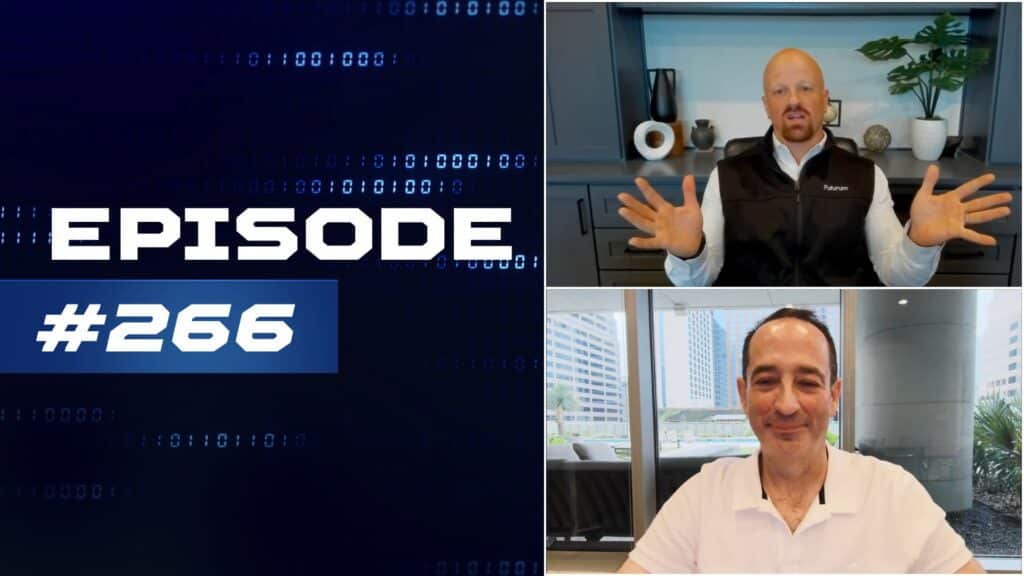Analyst(s): Mitch Ashley
Publication Date: November 14, 2024
Red Hat has announced its acquisition of Neural Magic, a company specializing in generative AI (GenAI) inference optimization. This move enhances Red Hat’s hybrid cloud AI portfolio by integrating Neural Magic’s expertise in efficient workload management and its contributions to the vLLM open-source project. The acquisition addresses key challenges in deploying large language models (LLMs), including cost, security, and scalability, while providing tools for seamless integration into enterprise workflows.
What is Covered in this Article:
- Red Hat’s strategic objectives behind acquiring Neural Magic
- Overview of Neural Magic’s expertise in AI inference and vLLM
- How the acquisition supports efficient and secure generative AI deployments
- Implications for DevOps workflows and software development
- Key benefits for enterprises, including cost savings and scalability
- Enhancements to Red Hat’s hybrid cloud AI portfolio
The News: Red Hat has agreed to acquire Neural Magic, a company specializing in software and algorithms for optimizing generative AI (GenAI) inference production workloads. This move reinforces Red Hat’s commitment to making AI accessible for enterprises and aligns with its strategy of enabling seamless AI deployment across hybrid cloud environments. Neural Magic brings expertise in inference optimization, focusing on cost-efficient and scalable solutions that leverage both CPUs and GPUs.
The acquisition addresses challenges that enterprises face in deploying large language models (LLMs), including resource-intensive computational requirements, operational complexities, and cost management. By integrating Neural Magic’s technologies, Red Hat aims to provide organizations with tools to optimize their AI workloads and support deployment in data centers, public clouds, and edge environments.
Red Hat Moves to Simplify Enterprise AI with Neural Magic Acquisition
Analyst Take: Red Hat’s acquisition of Neural Magic is a calculated move to address the growing complexity of deploying GenAI at an enterprise level. GenAI projects are challenged to move from proof of consent or MVP, delaying getting new AI capabilities into the hands of customers and end users.
Neural Magic brings a practical solution to challenges such as computational efficiency and resource utilization by focusing on inference optimization in CPU and GPU environments rather than focusing on model training. This aligns with Red Hat’s broader strategy to dominate the hybrid cloud market by offering scalable, secure, and open AI solutions. Neural Magic’s contribution to the vLLM project further strengthens Red Hat’s OpenShift AI and RHEL AI offerings, making them attractive options for organizations navigating multi-cloud and edge deployments.
This partnership offers a clear value proposition for enterprises: lower costs, greater flexibility, and improved security when deploying AI workloads. Red Hat’s focus on Role-Based Access Control (RBAC) and model authenticity reflects its understanding of the governance challenges associated with scaling AI. Overall, this acquisition strengthens Red Hat’s leadership in making GenAI accessible and practical for diverse industries.
Why vLLM Is Critical for AI Efficiency Across Environments
At the heart of Neural Magic’s offerings is its work on vLLM, an open-source runtime for LLMs initially developed at UC Berkeley. vLLM simplifies AI model inference by optimizing performance across diverse hardware platforms, including NVIDIA GPUs, AMD GPUs, and Google TPUs. This flexibility allows organizations to deploy AI solutions using infrastructure that aligns with their operational needs and budget constraints.
Red Hat’s integration of vLLM with its OpenShift AI platform enhances the efficiency of AI development and deployment. The runtime’s compatibility with CUDA and HIP libraries ensures developers can easily integrate it into existing workflows, reducing barriers to adoption. Thus, vLLM is an essential component in scaling AI applications across multiple environments.
Neural Magic’s Role in Transforming AI Inference Workloads
Neural Magic is recognized for its innovations in inference performance engineering. Unlike many AI companies focused on model training, Neural Magic specializes in optimizing the operational efficiency of deploying GenAI models. Its technologies include sparsity and quantization algorithms that reduce computational requirements, enabling cost-effective AI deployments without compromising performance.
The company also develops the LLM Compressor, a library designed for optimizing LLMs, and maintains a repository of pre-optimized models. These tools complement Red Hat’s hybrid cloud AI solutions, providing enterprises with a readymade framework for efficient and secure AI inference at scale.
Tackling Security and Scalability in GenAI Deployment
Security remains a critical focus. Neural Magic and Red Hat are addressing this with tools for robust RBAC and ensuring the authenticity of GenAI models. These innovations provide organizations with the governance and trust necessary for scaling AI workloads while maintaining operational and data integrity.
Streamlining DevOps with AI-Enabled Workflows
Neural Magic’s technologies align closely with Red Hat’s goal of accelerating software development workflows. Its inference stack is designed to integrate into DevOps CI/CD pipelines and Ansible declarative automation, allowing organizations to streamline the deployment of AI models. Developers can utilize pre-optimized libraries to reduce complexity and focus on building applications that efficiently incorporate AI capabilities.
This integration also supports organizations experimenting with multiple AI models. Neural Magic’s tools help manage the costs and complexities of deploying various LLMs, providing enterprises with the flexibility to scale AI adoption without extensive infrastructure modifications. This can result in decreased time-to-market and improved productivity for development teams.
Expanding Red Hat’s AI Capabilities with Targeted Tools
The addition of Neural Magic strengthens Red Hat’s AI portfolio, which includes Red Hat Enterprise Linux AI (RHEL AI) and OpenShift AI. These platforms support the development, training, and deployment of AI models across Kubernetes environments, enabling organizations to manage workloads seamlessly across hybrid cloud infrastructures.
Neural Magic’s contributions further enhance Red Hat’s capabilities in inference optimization. Combined with tools such as InstructLab, a collaborative project with IBM for fine-tuning LLMs, Red Hat offers a robust ecosystem for enterprises to customize and scale AI solutions according to their specific needs and operational goals.
What to Watch:
- Look for tight integration of Neural Magic. There should be very little overlap with Red Hat’s offering, and if integrated well, the addition of Neural Magic could make a measurable impact on development productivity and time to production environments.
- With even stronger support by Red Hat, vLLM open source can emerge as a standard for efficient AI inference, reshaping how organizations deploy AI models.
- Red Hat’s enhanced AI portfolio can pressure competitors to innovate similar hybrid cloud solutions. The combined solution can enable businesses to scale AI workloads more effectively across Red Hat’s infrastructure software.
See the complete press release on Red Hat’s acquisition of Neural Magic on the Red Hat website.
Disclosure: The Futurum Group is a research and advisory firm that engages or has engaged in research, analysis, and advisory services with many technology companies, including those mentioned in this article. The author does not hold any equity positions with any company mentioned in this article.
Analysis and opinions expressed herein are specific to the analyst individually and data and other information that might have been provided for validation, not those of The Futurum Group as a whole.
Other Insights from The Futurum Group:
DevOps Dialogues Red Hat Virtualization and AI Impacts on DevOps
Red Hat Accelerates Innovation, Automation, and AI
Dell APEX Cloud Platform for Red Hat OpenShift: Analysis of Operational Efficiency
Author Information
Mitch Ashley is VP and Practice Lead of Software Lifecycle Engineering for The Futurum Group. Mitch has over 30+ years of experience as an entrepreneur, industry analyst, product development, and IT leader, with expertise in software engineering, cybersecurity, DevOps, DevSecOps, cloud, and AI. As an entrepreneur, CTO, CIO, and head of engineering, Mitch led the creation of award-winning cybersecurity products utilized in the private and public sectors, including the U.S. Department of Defense and all military branches. Mitch also led managed PKI services for broadband, Wi-Fi, IoT, energy management and 5G industries, product certification test labs, an online SaaS (93m transactions annually), and the development of video-on-demand and Internet cable services, and a national broadband network.
Mitch shares his experiences as an analyst, keynote and conference speaker, panelist, host, moderator, and expert interviewer discussing CIO/CTO leadership, product and software development, DevOps, DevSecOps, containerization, container orchestration, AI/ML/GenAI, platform engineering, SRE, and cybersecurity. He publishes his research on FuturumGroup.com and TechstrongResearch.com/resources. He hosts multiple award-winning video and podcast series, including DevOps Unbound, CISO Talk, and Techstrong Gang.





